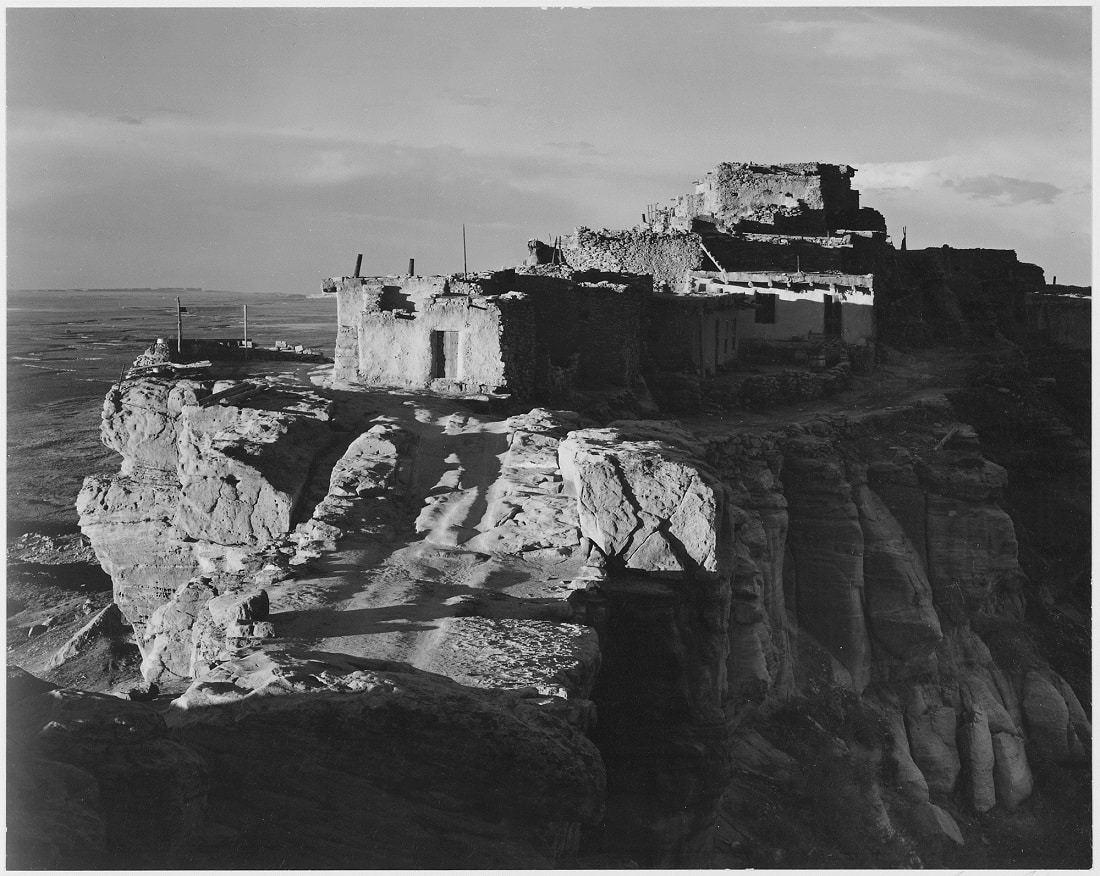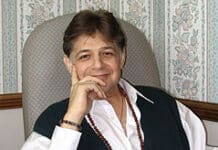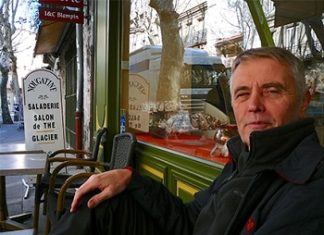
by Steve Roth
Reprinted with permission from The Miraculous 16th Karmapa: Incredible Encounters with the Black Crown Buddha.
In eighth century Tibet, Padmasambhava made a prophecy: “When the iron bird flies, when horses run on wheels, the king will come to the land of the red man.” Twelve centuries later, His Holiness the 16th Karmapa, Rangjung Rigpe Dorje, traveled—by airplane and by automobile—to the Hopi Indian nation.
In October of 1974 His Holiness Karmapa made his first journey to the United States. His itinerary was packed with a great many events, but from the beginning it was clear: one of the top items on His Holiness’ agenda was meeting with the Hopi Indians, whom he regarded as practitioners of the Buddhist ideal of non-aggression. A small caravan was organized to escort the Karmapa from Boulder, Colorado to the Hopi Indian reservation in Arizona. He would be meeting with Hopi Chief, Ned Nayatewa.
We rented a gold-colored Cadillac for the occasion. His Holiness rode in the front, an attendant monk rode in the back, and I had the great good fortune of being the driver. We made our way across Colorado, Utah, and Arizona, reaching Hopi Land early on the afternoon of the third day under cloudless blue skies. We followed a dirt road toward a rugged flat-topped hill rising dramatically from the desert floor. The road began to climb, and soon we were spiraling around the steep, rocky flanks of Hopi Mesa One. Ten minutes later we reached the Hopi village at the top of the mesa, a cluster of mud-plastered stone and brick dwellings huddled together atop a giant flat rock.
His Holiness stepped out of the car and into the 100-degree afternoon. He was greeted by Chief Ned, a short, wiry and weathered man in his late seventies. In spite of all the hardships that had befallen the Hopis, here stood a chief of dignity, gentleness and presence. When the Karmapa asked how things were, the chief responded, “Not so good.” There had been no rain for seventy-five consecutive days. Crops were failing, creating enormous hardship not only for his tribe but for others as well. The Karmapa listened intently, his face filled with compassion. He promised Chief Ned that he would do something about this situation, and that he would pray for all of the Hopis.
Chief Ned then invited His Holiness and entourage to enter the Hopi’s sacred Kiva, an underground chamber used for religious rituals. The only way to enter the Kiva was via an old wooden ladder that descended through a narrow opening to the dimly lit cavern below. His Holiness, being noticeably wider than the opening, stayed above; he waved us on as we followed Chief Ned down the ladder. As we were viewing the sacred objects in the center of the Kiva, I had the strangest feeling that His Holiness was present with us. I turned, and there in the shadows I saw him standing quietly behind us, viewing the items with great interest. I became quite disoriented. It was impossible for him to be in the Kiva, yet there he was. I had no idea how he entered the chamber, nor did I have a clue as to how or when he returned to the entrance where we had left him. The only thing I know is that he didn’t use the ladder—but the ladder was the only way in.
There followed a warm goodbye between Chief Ned and His Holiness. The Karmapa returned to the front seat of the Cadillac and we began our gradual descent down the mesa under an absolutely clear blue sky. When we were two-thirds of the way down, the Karmapa began chanting in Tibetan. A stillness ensued—and with it, a sense that we were circumambulating the mesa. We reached the desert floor and headed for the Karmapa’s eventual destination, the Hopi Motel and Convention Center at Mesa Two. As he continued chanting, I watched in awe as the sky transformed, with impossible speed, from an empty blue sky into a single thick mass of steel grey-black stretching from horizon to horizon.
We arrived at the inner courtyard of the motel after what I thought had been an hour’s ride from Hopi Mesa One. I parked the car and turned off the engine. I remained in the driver’s seat and watched as one of His Holiness’ attendant monks opened the car door and escorted His Holiness the twenty-five feet or so to his motel room. At the exact moment the door to the room was shut, an unearthly clap of thunder exploded overhead, and multiple bolts of lightning lit up the dense black sky. Then the rain came, a rain unlike anything I have ever known. If rain could pour more than buckets, or harder than a waterfall, that’s what was taking place at Hopi Land on that October afternoon. (I returned twenty years later and re-traced the exact route we had taken from Mesa One to Mesa Two. I had to drive it four times; I simply couldn’t comprehend that what I had thought to be an hour-long drive actually took less than twelve minutes. Only twelve minutes had passed between a clear blue sky and waterfall rain.)
By evening the Hopis and the Navajos were aware of what had occurred. Many of them gathered inside the motel’s convention center and received the Avalokitesvara empowerment from His Holiness. Many Westerners at the event were struck by the similarities between the Hopis and the Tibetans; they looked like they could have been members of the same extended family. The following day two local papers ran front-page stories reporting that the string of seventy-five consecutive days without rain had been broken by the visit of an “East Indian chief” who, among other things, was well known for making rain. (One headline declared “Chief Karmapa Brings Rain to Bless Hopi Land.”)
But the newspapers missed the real story: Padmasambhava’s eighth century prophesy had finally—and dramatically—been fulfilled.
















